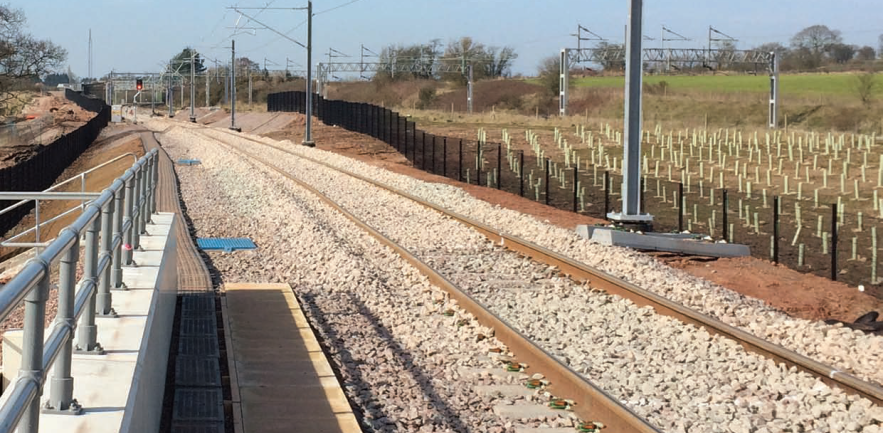
The project
CSIC is working with the Staffordshire Alliance on the £250m Stafford Area Improvements Programme to deliver the most comprehensively instrumented new rail bridges in the UK. Two rail bridges, one concrete and one steel, have been instrumented during their construction with an advanced network of fibre optic sensors capable of recording data up to 250Hz. Data collected from the beginning of the structure’s life enables a ‘state-of-the-asset’ report to be generated at handover and performance-guided asset maintenance using finite element modelling, BIM and fibre optic strain sensors across its lifetime. The monitoring system represents the first time that bridges of this type have been instrumented in such detail to understand their behaviour from the time they are constructed. Alongside the instrumentation, CSIC has developed methods to model structural performance monitoring systems, manage and include sensor data onto open data BIM models, visualise sensor data directly on BIM models and to develop open data models
The innovations
• Fibre optic cables installed into main prestressed beams and sleepers off-site at Laing O’Rourke’s Explore Manufacturing facility. This allowed faster installation of monitoring systems on site
• a new and highly robust temperature compensating sensor packaging system capable of capturing real-time thermal strain changes was internally developed
• CSIC has designed a method to allow the outputs related to strain changes in structural elements during their construction to be included and visualised in BIM for the first time
• integrating structural performance monitoring data into BIM models to reflect actual measured behaviour for whole-life asset management.
Impact and value
• Based on the data already collected, the CSIC project team can identify aspects of structural behaviour that have not been captured previously such as the real-time time dependent behaviour of prestressed concrete girders and sleepers; the development of thermal and concrete shrinkage strains in bridge decks; and the effect of construction traffic on the overall bridge response – this will improve future design with potential cost, material and time savings
• by investing in an integrated structural health monitoring system the entire load history and associated behaviour of an asset can be tracked in great detail throughout its life
• clients will be able to compare data captured from instrumentation to the reference state-of-the-asset report to track the performance of an asset over its entire life.
Download the full case study here
